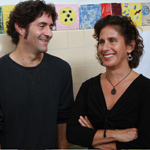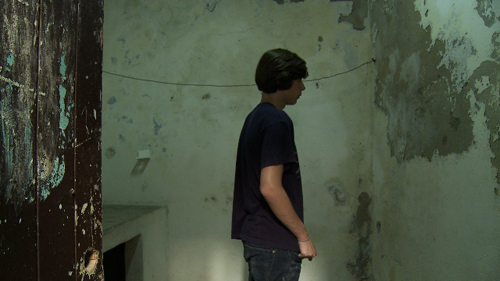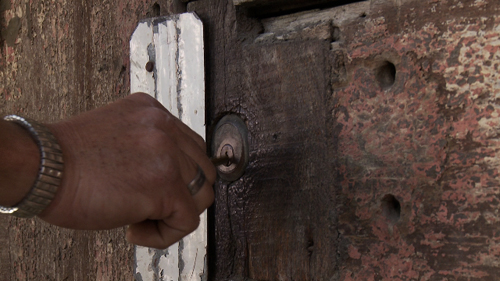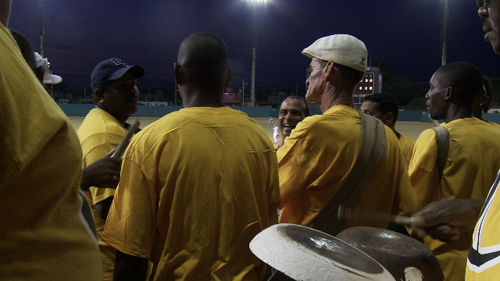Theme Essay by Marcia Jarmel and Ken Schneider
Two Documentary Filmmakers Show Why
A moviegoer’s experience is highly distinct from that of a reader, theatergoer, or aficionado of painting and sculpture, argued the French writer and translator Albert Laffay.
In a 1946 essay, “L’évocation du monde au cinema,” Laffay claimed that the “impression of reality” is greatest in film, which appeals to the spectator’s “sense of belief—never of course, entirely, but more intensely than do the other arts.” He went on to note that sometimes, even in an absolute sense, films are “very convincing.”
We could have a field day with this, given that filmmakers across genres have exploited the medium’s “convincingness” to sell, to propagandize, to spin, and to entertain. As documentarians, we have smaller budgets and audiences than feature filmmakers but use similar tools to provide a participatory experience for the viewer—in our case, a glimpse of the real world.
Adequate ink has been spent describing film language, the very concept of which invites comparison to narrative prose. The close-up in film is the analog of fine detail in prose. The establishing shot, or wide shot, parallels a writer’s delineation of a locale.
More challenging for the writer is the counterpart of the tracking shot, where a camera on a dolly or moving vehicle allows the viewer to watch immediate surroundings pass by. But, even here, a writer with narrative muscle can evoke a similar effect, as (our TW editor reminds us) Vladimir Nabokov did in the opening paragraph of King, Queen, Knave, where the point of view is that of a train pulling out of a station.
Filmmakers can still argue that a moviegoer experiences film differently than a reader experiences prose. When we read a novel, if we become distracted, confused by the writing, or perhaps just want to revisit an idea, we can turn back the page and reread a paragraph. We can absorb the writing during a series of evenings, over a period of days, weeks, or even months. A novel is parceled out between work, play, caregiving, and suffering. Over the time it takes to finish a book, we can read ourselves into it, bring the characters into our lives, luxuriate in the prose.
The filmmaker knows this is not a viewer’s experience. A film telescopes a story into a single 30-, 60-, or 90-minute sitting: reel life uninterrupted by real life. We get one chance to hold a viewer’s attention. One chance to engage, provoke, challenge, and entertain, to evoke an emotional connection with our story. This colors how we use our toolkit.
In scripted documentaries such as those shown on Frontline and 60 Minutes, the films are well researched, shot to script, and, for the most part, edited based on text: interviews, narration, and title cards.
In unscripted documentaries, like ours, directors enter environments over which they have no control. The story is crafted in the editing suite and relies on filmed images, not text. A successful outcome depends on our ability to build deep and trusting relationships with the subjects of our films. We commit to following a character or a storyline through thick and thin. News-oriented documentary producers gasp when we tell them we often have 100 hours of footage to wade through in order to find a one-hour film.
Our current film, Got Balz?, now in post-production, follows our son Mica’s coming-of-age journey through baseball, Bar Mitzvah, and Cuba. The thread is a project to collect baseball gear and send it to Cuban kids as a show of thanks to the country that sheltered his grandpa during the Holocaust. What begins as a simple idea to a 13-year-old evolves into a multiyear odyssey that ends with huffing duffle bags full of equipment to Havana.
When Mica visits his grandfather’s former home in historic Old Havana, he finds a colonial-era building, long decaying and abandoned, in its eleventh year of waiting for renovation. We instructed our cinematographer, the incomparable Roberto Chile, to see the house from Mica’s point of view.
At work in the editing suite, we begin the scene with a close-up of a Cuban hand (indicated by skin tone as not one of ours) opening the door with an old key. The particular creak of the door, gently amplified in the sound mix, announces that it is rarely used. Inside, there is no electric light, but natural light streams in from a courtyard, illuminating the exposed wires, the detritus underfoot, the shattered windows, the peeling paint, the decrepit spiral staircase, and the rotting interior doorframes.
Not a word is spoken. The only sounds are footsteps on crumbling floors and the rustling of a piece of plastic, partially taped to a window frame, that Mica pushes aside so he can get a better look at the courtyard. After a close-up of Mica’s face, we switch to his point of view, looking up at the darkness of the ceiling, ascending a decomposing staircase, going in and out of dirty rooms. We contemplate this space through Mica’s eyes before hearing him muse, in voice-over, about his grandpa’s reticence to return to Cuba. The entire scene lasts about ninety seconds, common for documentary scenes.
In the sound mix, the rustle of the plastic is prominent. We sharpen the ambient quiet of the house. No saws, no workers, no heavy boots, no hammers. In the background, we hear the murmur of people passing in front of the house, children playing a pick-up baseball game with makeshift gear (a stick making contact with a ball made of rags sounds quite different from that of a proper bat and ball), and the rumble of an American car from the 1950s, a common sound in Havana. It adds up to an intimate depiction of Mica’s connection to his grandpa, against the tableau of Cuba’s uneven economy.
A skilled writer could evoke a character visiting a place of personal importance, where the narrative becomes an interior one and the environs speak of the subtleties of local culture. The writer could describe the details in a way that makes us see, hear, and smell the place. But could it be done in a passage that takes only ninety seconds to read?
The filmmaker’s ability to layer pictures and sounds to create a story directly experienced by an audience in a short amount of time is what distinguishes us from writers. It is this immediacy—visual, aural, and emotional—that guides our viewers on a journey.
In another scene from Got Balz?, we rely on sound design and an establishing shot to reveal that Mica is indeed far from home. He’s attending a baseball game outside Havana.
In the editing room, we start the scene with a POV shot, looking out the front windshield of a car, approaching the stadium from Mica’s perspective. There’s a hint of percussion music in the background. When we cut to a tracking shot of fans inside the stadium dancing in unison, the music instantly increases in volume, up to the legal limit allowed by broadcasters. American fans don’t dance like this—at least, not in the ballpark. The third shot reveals the source of the music, a group of Cuban men banging on cowbells and drums. The fourth shot is Mica in the stands, elated at the energy of the fans and their love of the game, laughing at a large man nearby who shakes his ample butt to the rhythms.
In less than 25 seconds, we have established a specific place—including its utter difference from the one we are used to (earlier in the film, Mica attends a baseball game in his hometown of San Francisco)—and plunked Mica into yet another environment where he will surely learn something. Ultimately, he learns from his host, who works for the Cuban baseball association, that a ticket costs less than a soda, that virtually all Cubans can afford it, and that if a ball is hit into the stands, fans have to throw it back, as the cost of baseballs is quite high (partially due to the U.S. embargo).
Mica deepens his understanding of the larger world he inhabits, in the face of the contradictions revealed by his project. Cuba has family history, crumbling buildings, quality baseball, and unrealized aspirations; Mica has youthful idealism tempered by the messy adult world. His face reveals his elation and unease—elation at the ballpark and unease at his grandfather’s house, perhaps never to see its promised renovation.
These two scenes, each containing very little text, are emblematic of Mica’s journey. He spends the next 30 minutes of film time playing with a youth baseball team that has only one helmet, delivering his donations to the Martin Luther King Center in Havana, and struggling with both the inequality of being an American in Cuba and with the internal inequities of the island. Ultimately, he offers his final few pieces of baseball gear to a group of kids playing on the street, who surround him, grab at his bag, and ask for more gifts, barely stopping to thank him.
The good he experiences is usually tempered with bad and the bad with good: the once-beautiful house in decay, the baseball team that can barely afford balls. Our cinematic rendering of these ideas is effective because we allow our viewers to experience them directly, in the moment, without the intrusion of verbal explication. As one of my mentors used to berate me, “Show ‘em, don’t tell ‘em.”
In unscripted documentary filmmaking, pictures really do speak louder than words.
Publishing information
- “L’évocation du monde au cinema,” by Albert Laffay, Temps Modernes, 1946.
- King, Queen, Knave by Vladimir Nabokov (McGraw-Hill, 1968).
Art Information
- Stills from the film Got Balz?: “Grandpa’s House,” “Grandpa’s House Key,” and “Cuban Baseball Drums” © Marcia Jarmel and Ken Schneider; used by permission.
 Marcia Jarmel and Ken Schneider founded PatchWorks Films in 1994 and have been producing and directing documentaries since then. PatchWorks specializes in films that explore contemporary social issues through the viewpoint of closely followed characters. These award-winning documentaries have been broadcast worldwide and screened at museums, libraries, schools, community centers, street corners, conferences, and film festivals.
Marcia Jarmel and Ken Schneider founded PatchWorks Films in 1994 and have been producing and directing documentaries since then. PatchWorks specializes in films that explore contemporary social issues through the viewpoint of closely followed characters. These award-winning documentaries have been broadcast worldwide and screened at museums, libraries, schools, community centers, street corners, conferences, and film festivals.
Got Balz? cannot be completed or released without a successful outcome for the film's Kickstarter campaign, which ends May 16. To learn more about the campaign and how close PatchWorks is to achieving its $40,000 goal, visit the Got Balz? Kickstarter website.
Photo of Ken Schneider and Marcia Jarmel © Najib Joe Hakim



